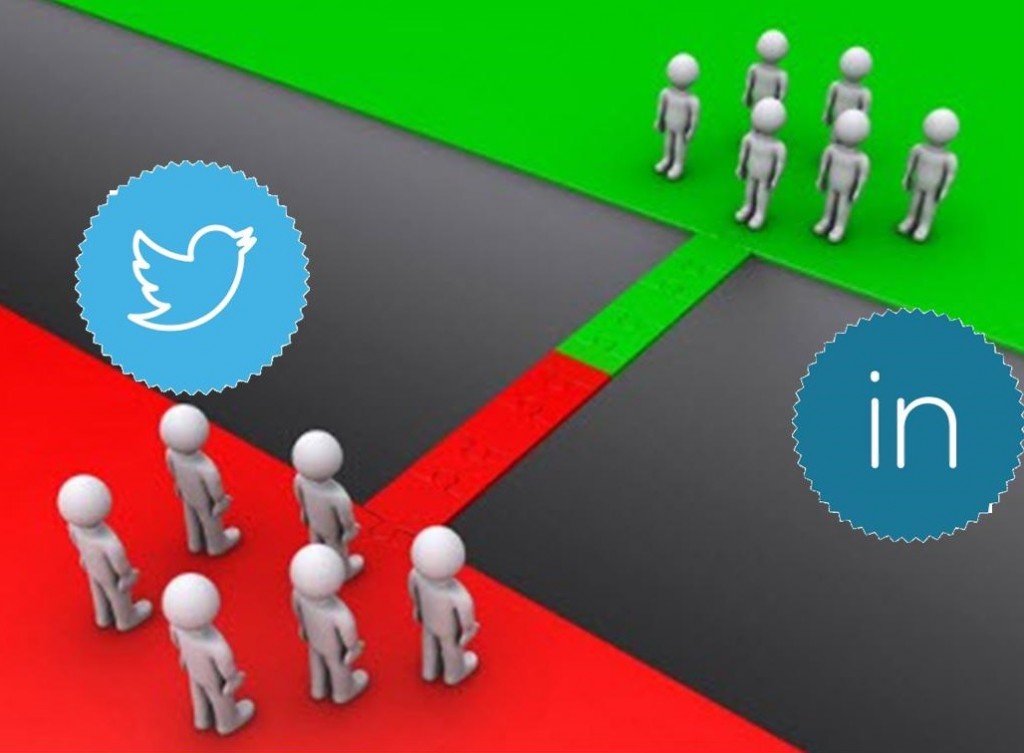Recent data analysis has revealed that age plays an important role in the popularity of these networks.
According to a recent release from Doug Anmuth, an analyst from JPMorgan, there are some significant social media marketing trends being revealed that have to do with the age of the users of the various networks.
What he found was that the user base at Twitter tends to be younger than all other large networks, for example.
At the same time, Anmuth also pointed out that on the other end of these social media marketing trends is that the users of LinkedIn are slightly older than those of other networks. He revealed that Twitter may lean toward the younger users, it still has users across every age range. The heart of its user group in the United States is made up of people between the ages of 13 and 44. The age range representing the largest group of its users is from 25 to 34. That said, 10.1 percent of its users are between the ages of 13 and 17, which represents a sizeable group. Equally, 18.2 percent of its users are 18 to 24 years old.
This knowledge, as well as the ages on other networks, is important to social media marketing trends and campaigns.
 The reason is that the fact that there is a difference of this nature from one network to the other could change the way that ads are placed and promotions are expressed from one platform to the next.
The reason is that the fact that there is a difference of this nature from one network to the other could change the way that ads are placed and promotions are expressed from one platform to the next.
To demonstrate the difference, looking at Facebook, it reveals that the user range is considerably broader. Still the largest social network in the world, its largest segment is made up of 25 to 34 year olds, at 19 percent of its American user base. Another 17 percent was represented, each, by the groups of users in the 34 to 44 year old range and the 45 to 54 year olds.
At the other end of the scale, LinkedIn, the professional network, leans much more to an older crowd, with the majority of its American user base made up of people aged 45 through 54. Only 9.6 percent of LinkedIn users were within the 18 to 24 age group. Social media marketing trends may soon need to differ from one network to the next to ensure that they will appeal to the largest groups of users.
The weekend following Black Friday may have seen a dip in sales, but the week started off strong.
Massive discounts from Black Friday and the Thanksgiving weekend throughout the U.S., on retail sales, took quite a toll, to the point that consumers spent nearly 3 percent less than they did last year, but Cyber Monday m-commerce data looks as though it may be turning that trend around.
The data was recently reported by an industry group and has revealed that online purchases were strong.
This may be an indication that while brick and mortar retailers could be facing a more difficult season, this year, Cyber Monday m-commerce and overall online shopping experienced soaring sales, which could help to make up for the lower figures from the days before. The National Retailer Federation had estimated that the weekend average spending per shopper would be about $407.02. When compared to last year at the same time, that would be 3.9 percent less due to the lower prices. The group suggested that if the prices stay down, the trend will last the rest of the way through the holiday season.
Cyber Monday m-commerce did prove to have powerful numbers, but it still represents only a fraction of overall spending.
 According to the chief executive of the National Retail Federation, Matthew Shay, “Retailers will continue to aggressively promote their in-store and online offerings, looking to entice today’s very budget-conscious and value-focused shopper.” Data from Shay’s organization said that there were 141 million people in the United States who shopped at least one time over the weekend. This is an increase over the 139 million who did so last year. However, the total spending had been expected to hit $57.4 billion over the four days from Black Friday through Cyber Monday, which was a decrease of 2.8 percent when compared to the same four day period in 2012.
According to the chief executive of the National Retail Federation, Matthew Shay, “Retailers will continue to aggressively promote their in-store and online offerings, looking to entice today’s very budget-conscious and value-focused shopper.” Data from Shay’s organization said that there were 141 million people in the United States who shopped at least one time over the weekend. This is an increase over the 139 million who did so last year. However, the total spending had been expected to hit $57.4 billion over the four days from Black Friday through Cyber Monday, which was a decrease of 2.8 percent when compared to the same four day period in 2012.
Analysts explained that the massive deals that drew large numbers of consumers shrank the sales and put a dent into the retail profit margins. Although the sales have been rising – particularly with the Cyber Monday m-commerce data being included into the mix, when all was said and done, the gross margins were headed downward.
 The reason is that the fact that there is a difference of this nature from one network to the other could change the way that ads are placed and promotions are expressed from one platform to the next.
The reason is that the fact that there is a difference of this nature from one network to the other could change the way that ads are placed and promotions are expressed from one platform to the next.
 According to the chief executive of the National Retail Federation, Matthew Shay, “Retailers will continue to aggressively promote their in-store and online offerings, looking to entice today’s very budget-conscious and value-focused shopper.” Data from Shay’s organization said that there were 141 million people in the United States who shopped at least one time over the weekend. This is an increase over the 139 million who did so last year. However, the total spending had been expected to hit $57.4 billion over the four days from Black Friday through Cyber Monday, which was a decrease of 2.8 percent when compared to the same four day period in 2012.
According to the chief executive of the National Retail Federation, Matthew Shay, “Retailers will continue to aggressively promote their in-store and online offerings, looking to entice today’s very budget-conscious and value-focused shopper.” Data from Shay’s organization said that there were 141 million people in the United States who shopped at least one time over the weekend. This is an increase over the 139 million who did so last year. However, the total spending had been expected to hit $57.4 billion over the four days from Black Friday through Cyber Monday, which was a decrease of 2.8 percent when compared to the same four day period in 2012.